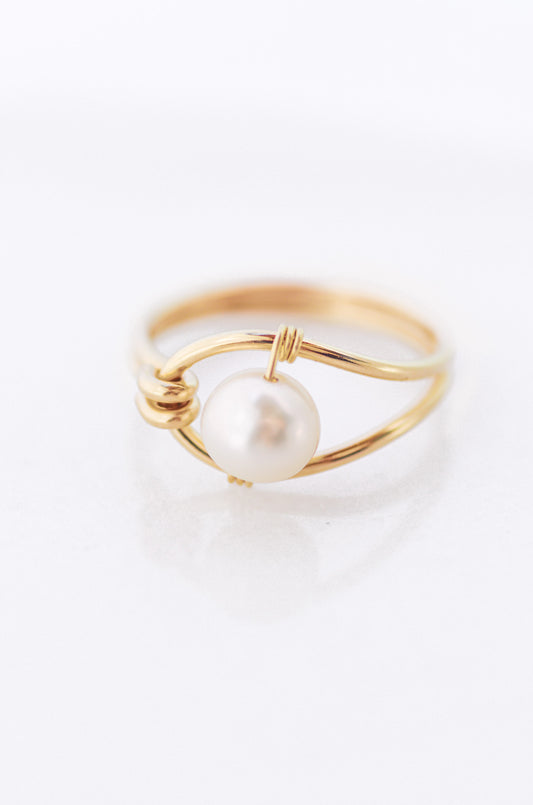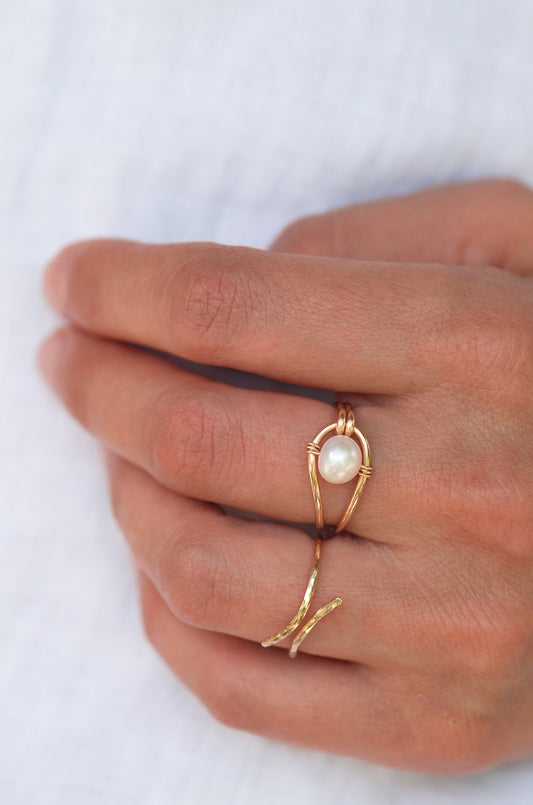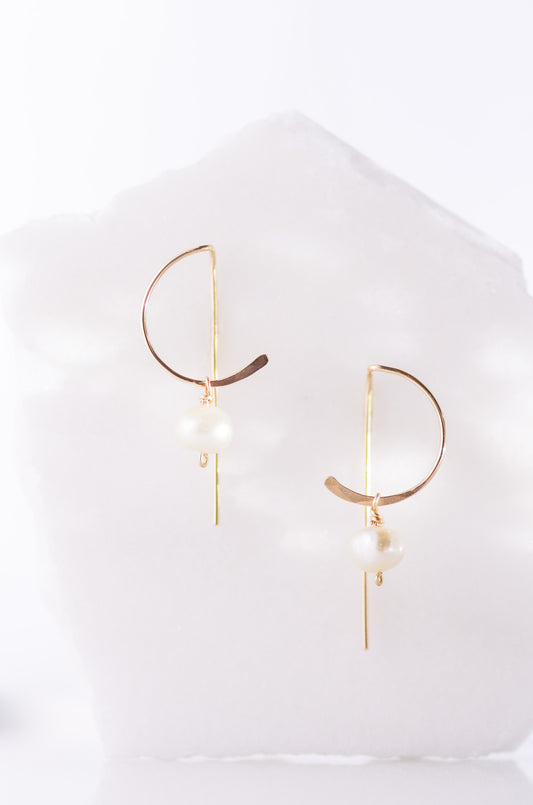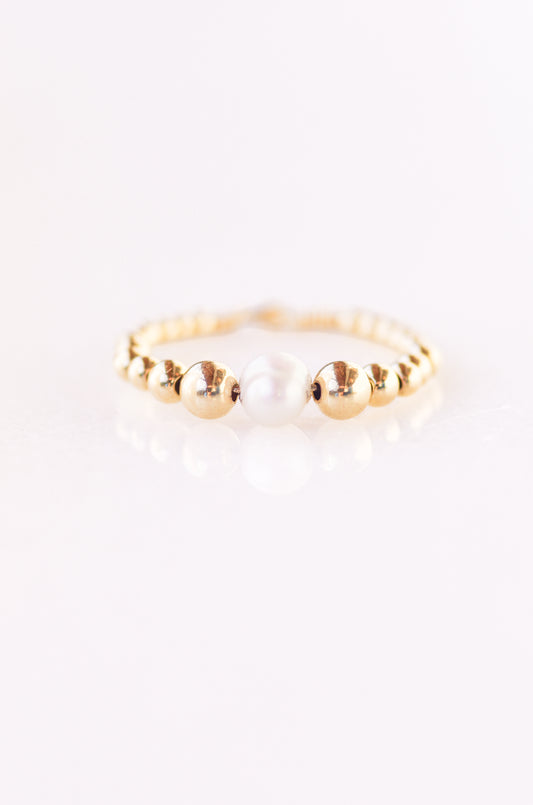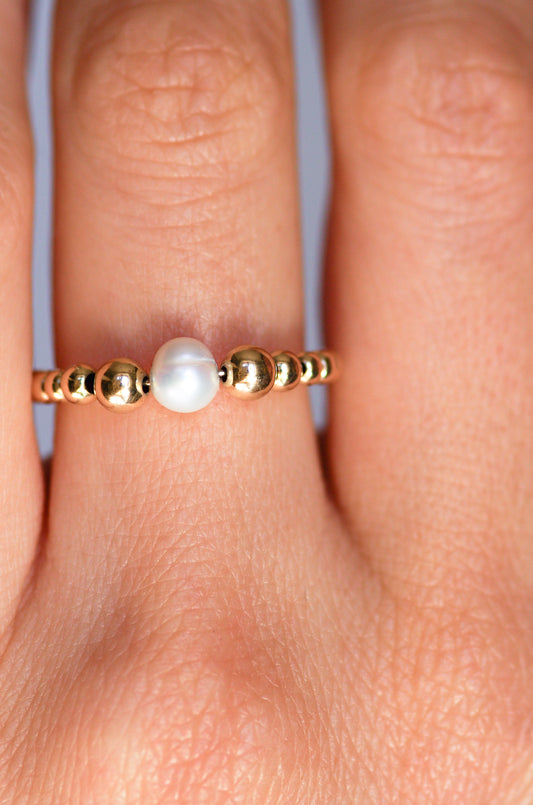Handmade Jewelry vs. Trends
Teilen
When choosing jewelry, the decision often comes down to handmade pieces or trend-driven items. Handmade jewelry emphasizes quality, craftsmanship, and personal connection, while trend jewelry focuses on affordability and fast-changing styles. Both have their appeal, but they cater to different values and priorities.
- Handmade Jewelry: Known for its durability, artisan techniques, and use of materials like gold-fill or recycled metals. It often carries emotional value and aligns with eco-conscious practices.
- Trend Jewelry: Designed for short-term use, it’s affordable and reflects current styles but often lacks durability and long-term significance.
Quick Comparison
| Aspect | Handmade Jewelry | Trend Jewelry |
|---|---|---|
| Materials | Gold-fill, recycled metals, real gemstones, pearls | Gold plating, base metals like nickel/zinc, plastic resins |
| Durability | Long-lasting with proper care | Short lifespan, prone to wear |
| Craftsmanship | Artisanal, unique designs | Mass-produced, uniform |
| Environmental Impact | Low, uses recycled materials, long lasting, can be recycled infinitely | High, chemical processes and waste, ends up in landfills |
| Cost | Higher upfront, better long-term value | Low upfront, frequent replacements |
In Italy, jewelry holds deep cultural significance, symbolizing heritage, artistry, and personal milestones. Handmade pieces, like those from brands such as Rays & Riches, align with Italian values of quality and thoughtful design. Choosing handmade jewelry is about aesthetics as much as it it is a reflection of your priorities, whether that’s longevity, sustainability, or personal connection.
Handmade Jewelry: Lasting Quality and Eco-Friendly Practices
How Craftsmanship Shapes Handmade Jewelry
When it comes to handmade jewelry, the artisan's touch transforms raw materials into something truly special. Unlike machine-made pieces, handcrafted jewelry reflects the time, skill, and creativity of its maker. Each piece tells a story, carrying the artisan's vision and dedication.
Italian artisans, in particular, weave centuries of artistic tradition into their designs. Brands like Rays & Riches draw on principles like balance, harmony, and even the golden ratio to create pieces that feel timeless and effortlessly elegant. Even the simplest designs are imbued with a sense of structure and meaning, making them feel natural rather than fleeting or overly trendy.
In keeping with these traditions, Rays & Riches have embraced materials that rely on heat-pressure bonding of the gold layer to the base metal. This enhances durability and ensures skin safety. This approach also avoids the use of harsh chemicals. This commitment to craftsmanship and sustainability lays the groundwork for using eco-friendly materials.
Eco-Friendly Materials and Ethical Methods
One standout feature of gold-fill is its durability. It contains 100 times more gold than gold-plated alternatives [2][4], meaning it retains its luster and quality far longer, while plated pieces often fade within weeks or months [2][3][4].
Rays & Riches takes this one step further by combining ethically sourced and recycled metals with repurposed vintage pearls, reducing the need for mining and its associated environmental toll [1]. They also prioritize carbon-neutral shipping and chemical-free production methods.
The heat-pressure bonding technique further contributes to sustainability. By avoiding chemicals, artisans not only reduce toxic waste but also create safer work environments and jewelry that’s better for sensitive skin. These methods ensure that every piece not only looks stunning but also aligns with eco-conscious values. And because each item is crafted by hand, it carries a unique, personal touch.
Personal Meaning and Connection
Handmade jewelry offers more than just aesthetic appeal - it creates a personal connection. Each piece reflects the maker's vision and the wearer’s individuality, making it perfect for marking life’s special moments. Custom designs, in particular, allow for a deeper expression of personal taste and sentiment.
In Italy, jewelry often becomes a family heirloom, passed down through generations and woven into the fabric of family history. The slight imperfections or unique design details in handmade pieces - like asymmetries or hand-engraved patterns - add to their charm and make them even more special.
Rays & Riches embraces this philosophy by drawing inspiration from Natures’ balance, harmony, and patterns. Their designs feel meaningful and beautifully thought out, with each order including a thoughtful touch that enhances the connection between the jewelry and its wearer.
Trend Jewelry: The Fast Fashion Appeal
What Makes Jewelry Trend-Based?
Trend jewelry operates much like fast fashion, thriving on rapid turnover, seasonal updates, and immediate allure. These pieces are crafted to reflect the latest styles, often hitting stores mere weeks after a trend emerges. The pace is relentless: something trendy in spring can feel outdated by autumn, with social media and global events accelerating this cycle even further.
Mass production is at the heart of trend jewelry. Factories churn out thousands of identical pieces using automated processes, ensuring uniformity but sacrificing the individuality and craftsmanship of handmade items. Retailers launch seasonal collections every few months, encouraging consumers to constantly update their jewelry boxes. This approach frames jewelry as a disposable accessory rather than a cherished investment.
This fast-paced model not only influences style but also impacts material quality and environmental considerations.
Materials and Environmental Effects
The materials used in trend jewelry reflect its fleeting nature. Gold plating is a common choice, offering the look of precious metal at a fraction of the cost. However, the thin gold layer tends to wear off quickly, exposing base metals like nickel, copper, or zinc. These metals, while affordable and easy to work with, often lack durability and can cause skin irritation or discoloration, giving these pieces a short lifespan.
The environmental consequences go beyond the materials themselves. Chemical processes like electroplating, used to coat metals, generate hazardous waste. This contrasts sharply with the more transparent practices often associated with ethically sourced, handmade jewelry.
Trend jewelry also carries a hefty carbon footprint. The energy demands of mass production facilities and the global transportation of finished products contribute to a higher environmental cost per wear compared to more durable, long-lasting alternatives.
Appeal vs. Long-Term Worth
The allure of trend jewelry lies in its affordability and ability to keep up with ever-changing styles. It allows consumers to experiment with bold designs or fleeting trends without making a significant financial commitment. From dainty necklaces to eye-catching earrings, the variety ensures there’s something for every outfit and mood, making it an exciting option for those who love to keep their accessories fresh.
However, this initial appeal often fades over time. Gold plating wears off, exposing base metals that can irritate the skin. The mass-produced nature of these pieces also means they rarely hold sentimental value, unlike handcrafted jewelry that often becomes part of personal stories or family traditions.
When it comes to long-term value, trend jewelry can be less economical than it seems. Frequent replacements add up, making it more costly over time than investing in durable, well-made pieces. Additionally, trend jewelry typically lacks resale value due to its lower quality, mass production, and rapidly changing styles. In contrast, handcrafted jewelry often retains or even increases in value, highlighting its potential as a meaningful and lasting investment.
The fleeting charm of trend jewelry stands in stark contrast to the enduring worth and emotional connection of handcrafted pieces.
Handmade vs. Trend Jewelry: Side-by-Side Comparison
Comparison Table: Main Differences
Understanding the key differences between handmade and trend jewellery can help you make choices that align with your values. These differences go beyond just appearance, touching on aspects like environmental impact, craftsmanship, and long-term value.
| Aspect | Handmade Jewellery from Rays&Riches | Trend Jewellery |
|---|---|---|
| Materials | Gold-fill (contains 100x more gold than plated), recycled metals, vintage stones | Gold plating over base metals (often nickel, copper, zinc) |
| Durability | Built to last with proper care | Less durable, often requiring frequent replacement |
| Craftsmanship | Highlights artisan skill and unique variations | Uniformly made through automated processes |
| Environmental Impact | Uses chemical-free bonding, recycled materials, and generates minimal waste | Relies on chemical electroplating, contributing to mining waste and slow biodegradation (up to 500 years) |
| Carbon Footprint | Locally produced, reducing transportation emissions | Manufacturing can emit significant CO₂ (e.g., 31 kg CO₂ for a pair of gold earrings) |
| Personal Value | Holds emotional significance and tells a unique story | Often seen as disposable fashion accessories |
| Price Range | Higher initial cost but offers long-lasting value | Lower upfront costs but frequent replacements add up |
| Longevity | Timeless designs with enduring appeal | Trend-driven, quickly becoming outdated |
These distinctions highlight how handmade and trend jewellery differ in sustainability, craftsmanship, and personal value.
Handmade jewellery, like pieces from Rays & Riches, stands out for its eco-conscious production methods. For instance, it uses heat and pressure bonding to create a thicker, more durable gold-fill layer without relying on harmful chemicals. On the other hand, trend jewellery often employs electroplating, which not only wears out quickly but also involves toxic processes that harm the environment.
Mass production is another issue with trend jewellery. While handmade pieces are typically made-to-order, reducing waste and overproduction, trend jewellery contributes to a "throwaway culture." Many mass-produced items end up in landfills, taking up to 500 years to decompose and releasing toxins into the environment as they break down[6][7].
Transparency is becoming a critical factor for consumers. A 2021 Tracemark Tech report revealed that 94% of consumers believe jewellery brands should disclose more about their sourcing and production practices[6]. Handmade jewellers often provide clear insights into their methods and materials, while trend jewellery brands rely on complex, less-transparent supply chains.
Though trend jewellery may seem like a budget-friendly choice, its short lifespan and environmental toll make handmade pieces a smarter long-term investment. This shift in consumer behaviour is evident, with searches for sustainable jewellery skyrocketing by 1,434% between 2018 and 2022[6].
In Italy, this conversation resonates deeply with the cultural appreciation for artisanal craftsmanship. Handmade jewellery not only showcases exceptional skill but also carries stories and traditions, reflecting the rich heritage that Italians hold dear.
sbb-itb-2024ddf
Jewellery as a Lifestyle Choice in Italy
Why Jewellery Matters in Italian Culture
In Italy, jewellery is far more than just an accessory - it's a reflection of heritage, artistry, and a way of life. Rooted in a deep tradition of artisanal craftsmanship, jewellery plays a key role in the Italian concept of bella figura, the art of presenting oneself with grace and sophistication. It’s this cultural ideal that makes jewellery a powerful statement of identity and values.
Handmade jewellery holds a special place in Italian hearts, symbolising a dedication to artistry and the enduring legacy of master craftsmen. Each handcrafted piece carries a story, infused with the passion and skill of its maker. This connection to tradition and authenticity is central to Italian culture, where quality and meaning take precedence over fleeting trends.
For Italians, jewellery isn't just about aesthetics - it's about expressing individuality. Handcrafted pieces are seen as a commitment to timeless elegance and mindful choices, while trend-driven items reflect a more temporary allure. The preference for handmade jewellery aligns with a broader cultural mindset: investing in fewer, high-quality items that stand the test of time, rather than accumulating disposable fashion pieces.
Sustainability has also become a priority, particularly among younger Italians. The growing awareness of environmental impact influences their choices, making ethically sourced, handcrafted jewellery especially appealing. This shift seamlessly blends with Italy's enduring values, where quality and responsibility go hand in hand.
Brands like Rays & Riches resonate deeply in this cultural context, embodying Italy's dedication to craftsmanship and authenticity.
How Rays & Riches Reflects Italian Values
Rays & Riches captures the essence of Italian jewellery traditions by blending authentic craftsmanship with a modern, sustainable ethos. The brand takes inspiration from natural patterns like the golden ratio, a principle that has shaped Italian art and architecture for centuries, creating designs that feel balanced and timeless.
Their approach merges contemporary elegance with ethical practices. By using recycled materials and a chemical-free bonding process, Rays & Riches aligns with Italy’s preference for natural and health-conscious choices. The use of gold-fill, which contains significantly more gold than standard plating, ensures long-lasting quality - something Italian consumers deeply value.
The brand also embraces sincerità, the Italian ideal of genuine authenticity. Every order is thoughtfully packaged, reflecting a tradition of personalised service and attention to detail that defines Italy’s most respected artisans. This personal touch fosters a meaningful connection with customers, echoing the warmth and sincerity that Italians treasure in their interactions.
Rays & Riches’ commitment to small-scale, local production mirrors Italy’s appreciation for artisanal craftsmanship over mass manufacturing. Whether it’s a minimalist design or a bold statement piece, the brand celebrates individuality while staying true to the refined elegance that defines Italian style.
Transparency and honest communication are at the heart of Rays & Riches. This dedication to openness resonates with Italian consumers, who value authenticity in every aspect of their lives - including the jewellery they wear.
Conclusion: Choosing Jewellery with Purpose
The jewellery you wear is more than just an accessory - it’s a reflection of your values. Handmade jewellery stands out for its durability, ethical craftsmanship, and personal significance, while trendy pieces often prioritize short-term appeal over quality and environmental care. This highlights the enduring benefits of thoughtful craftsmanship compared to fleeting fashion trends.
Your choice also carries an environmental weight. Recent research from 2023 reveals that over 60% of consumers now factor sustainability into their jewellery purchases[5]. Many handmade brands embrace eco-conscious practices, using recycled metals and avoiding harmful chemicals. For example, Rays & Riches combines ethical methods with designs that feel both modern and timeless, proving that sustainability and style can coexist.
Jewellery becomes truly meaningful when there’s a personal connection. Knowing the story of your piece - the artisan behind it, the sustainable materials used, or the values it embodies - adds depth to what you wear. This sentiment resonates deeply in Italy, where jewellery is often seen as an extension of personal identity and a celebration of artistry.
While handmade jewellery may have a higher upfront cost, its longevity and lasting value make it a wise investment. Trendy jewellery, on the other hand, tends to fade, chip, or break, leading to frequent replacements that ultimately cost more and contribute to waste.
Choosing jewellery with purpose means thinking beyond passing trends and focusing on the bigger picture. Consider the materials, the production methods, and the ethical standards of the brands you support. Seek out companies that are transparent and genuinely committed to sustainability, steering clear of empty marketing promises. By doing so, you’re not just buying jewellery - you’re making a statement about what truly matters.
FAQs
Why is handmade jewelry a more sustainable choice than trendy pieces?
Handmade jewelry like those from Rays & Riches champions a more sustainable approach by emphasizing the use of ethically sourced and recycled materials, such as vintage pearls and gemstones. This thoughtful choice helps cut down on the environmental strain linked to mining and extracting new resources.
On top of that, their handmade pieces are crafted using eco-conscious methods, like chemical-free bonding techniques. These not only reduce waste but are also kinder to sensitive skin. With its focus on quality craftsmanship and long-lasting designs, handmade jewelry stands as a timeless counterpoint to the fleeting trends of mass-produced fast fashion.
Why is gold-fill in handmade jewelry more durable than gold-plated jewelry often seen in trends?
Gold-fill jewelry stands out for its durability, thanks to a much thicker layer of gold that's mechanically bonded to the base metal using heat and pressure. This method creates a sturdy, long-lasting finish that resists tarnishing and minimizes fading or wear over time.
In contrast to gold plating, which involves a thin, chemically applied layer of gold, gold-fill offers a more enduring and skin-friendly alternative. It's particularly suitable for individuals with sensitive skin. With its strength and lasting elegance, gold-fill is an excellent choice for handmade jewelry designed to remain beautiful for years to come.
Why is handmade jewelry a timeless choice compared to trend-based pieces?
Handmade jewelry is a timeless treasure, celebrated for its artistry, individuality, and lasting charm. Unlike mass-produced, trend-driven pieces that may lose their appeal over time, handmade creations are crafted with meticulous care and attention, making them a meaningful and enduring addition to any collection.
These pieces are often made using premium materials like gold-fill or repurposed vintage gemstones, ensuring they not only stand the test of time but also age gracefully. Their combination of durability and personal touch makes handmade jewelry a thoughtful choice - something that carries both sentimental and aesthetic significance for years to come.

